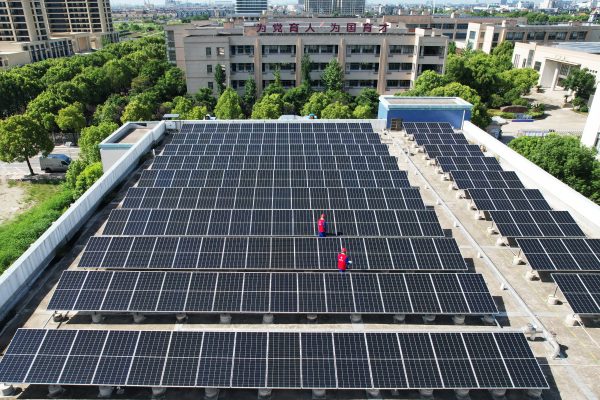The regulatory landscape is pivotal, providing clarity for markets to flourish. Countries like Singapore and China have embraced new sustainable finance regulations, guiding the financial sector toward eco-friendly and socially responsible ventures. Fourteen Asian states and ASEAN have developed or are in the process of developing green taxonomies. China established its Green Bond Catalogue in 2015, while Singapore is currently finalising its forthcoming green taxonomy.
Building upon their sustainable finance policies and regulations, Singapore and China have elevated their collaborative efforts. In April 2023, the Monetary Authority of Singapore and the People’s Bank of China unveiled the China–Singapore Green Finance Taskforce — a seminal stride aimed at amplifying bilateral cooperation in green and transition finance across Singapore, China and East Asia. Comprising a public–private consortium of expert members including commercial banks, such as Singapore-based DBS, sovereign wealth funds and Chinese regional banks, the taskforce functions as a conduit for the exchange of best practices and knowledge.
This initiative aims to boost investment in green technology and promote decarbonisation by streamlining the issuance of sustainable financial instruments. The Singapore Exchange and China International Capital Corporation will jointly establish a workstream with the goal of fortifying connectivity within the sustainability bond market between the two nations. This endeavour encompasses the mutual issuance of — and access to — green and transition bond products across China and Singapore.
Collaborative efforts between the Metaverse Green Exchange and China Beijing Green Exchange are also integral to this facilitation. Their cooperative workstream will harness technology to expedite the adoption of sustainable finance, including piloting digital green bonds accompanied by carbon credits.
The hybrid and expert-based character of the taskforce should facilitate greater public–private sector collaboration in China and Singapore on concrete products and instruments. This will catalyse capital flows to support a credible and inclusive transition to low-carbon business activities.
Investing in sustainable finance products offers substantial long-term benefits. It provides investors with an opportunity to invest in infrastructure while also meeting their climate commitments. It also reduces any regulatory risks associated with investments that are not aligned with the transition. Facilitating the issuance of green bonds for sustainable projects and bolstering financing mechanisms are poised to invigorate the sustainable finance market in the region.
The taskforce will also collaborate on Singapore’s green taxonomies and China’s Green Bond Catalogue. To combat greenwashing and to infuse greater clarity into sustainable finance markets, novel regulations, such as taxonomies, have adopted a prescriptive stance on what qualifies as ‘sustainable’ and outlined methodologies for its evaluation.
But the multifarious regulatory standards adopted across different jurisdictions can engender disparities, posing challenges to the effective oversight of global financial activities. Singapore and China’s collaboration holds importance in the face of complexities introduced by financial globalisation.
The Monetary Authority of Singapore and the People’s Bank of China are collaborating through the International Platform on Sustainable Finance (IPSF) — a discussion forum comprising representatives from national central banks and finance ministries. IPSF’s Steering Committee and Taxonomy Workgroup are dedicated to jointly developing globally harmonised sustainable finance alignment tools, considering local nuances and transition factors. IPSF has worked on a Common Ground Taxonomy to establish interoperability between the EU Sustainable Finance Taxonomy and China’s Green Bond Endorsed Project Catalogue.
Likewise, China and Singapore are striving for interoperability between their respective taxonomies. To achieve interoperability, it is important to align certain design aspects. These aspects include having similar objectives and utilising comparable sector classification systems to define economic activities.
The cooperation will need to overcome certain hurdles. For instance, clarifying whether and to what extent social aspects will be part of the taxonomy. There is also the question of how to classify transitional business activities. The amber classification serves to distinguish transitional activities from wholly sustainable ones, but signals their relevance for the green transition to investors. The colour differentiation approach is being adopted by Singapore but not by China.
The bilateral endeavour undertaken by China and Singapore bears considerable significance. Sustainable finance taxonomies play a crucial role in bringing clarity to global sustainable finance markets. But their efficacy hinges on regulators collaborating to develop a shared understanding of definitions and how to measure green and transition activities.
The initiative taken by China and Singapore could be expanded to involve a wider set of countries in Asia through existing regional institutions. ASEAN has established its own Taxonomy for Sustainable Finance, but the ASEAN taxonomy is a non-binding instrument that serves as a template for member states’ respective national taxonomies. The bilateral cooperation between China and Singapore could, in the future, also involve ASEAN and its member states.
Stefanie Schacherer is Assistant Professor of Law at Singapore Management University.

